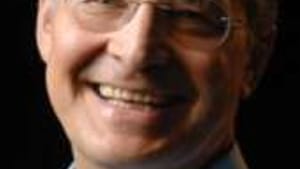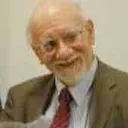Stay in the Loop
BSR publishes on a weekly schedule, with an email newsletter every Wednesday and Thursday morning. There’s no paywall, and subscribing is always free.
Made in Philadelphia
Mendelssohn Club's "Philadelphia Voices'

Donald St. Pierre's new cantata, Morning Has Broken, opens with a quotation from a 17th Century theologian and writer, Thomas Traherne, that immediately jumped onto my personal list of thoughts to remember:
"What have men to do in this world but to make themselves happy?"
The rest of the cantata intersperses three verses from the title hymn with musical settings of prose passages in which Traherne describes how the world looked to him when he was a child— when everything was "inexpressibly rare and delightful and beautiful." For the finale, the audience joins the choir and the instrumentalists in a repeat of all three verses of the hymn.
The Network for New Music and the Mendelssohn Club premiered the cantata at the end of their "Philadelphia Voices" concert under the aegis of the Philadelphia Chamber Music Society. St. Pierre's mixture of familiar hymn and unfamiliar prose closed the concert with the audience joining in a touching affirmation of life's mysteries. It should be a popular item with choral groups looking for a memorable way to conclude their concerts.
The program featured six pieces created by Philadelphia composers since 1995. The Mendelssohn Club contributed its conductor, Alan Harler, as well as a 26-voice chamber chorus recruited from its much larger symphonic chorus. The Network contributed the instrumentalists and its regular conductor Jan Krzywicki, who shared the conducting honors with Harler.
A real music box
The program's four choral works spanned a wide range of subjects and approaches. The opening piece, Cynthia Folio's Music Box (1995), achieved its effects with an expressive piano part and the way it played with the words of a poem that described childhood memories of a family music box. The nostalgic sound of a real music box provided the final notes.
The program's other premiere, Thomas Whitman's At War's End, set three Civil War poems by Walt Whitman for choir, mezzo-soprano and baritone, accompanied by harp, piano and the dark timbres of the viola and the cello. Thomas Whitman's choral writing ranges from the floating to the frantic. His writing for solo voices includes a melodious short aria for the mezzo and a concluding baritone solo in which a survivor looks on the body of his dead enemy lying in a coffin.
Much of the choral writing in these pieces seemed relatively straightforward and unadorned to my ear. The big exception, Jan Krzywicki's Lute Music, sets the second verse of a Christmas poem by Kenneth Rexroth that compares sexual love to the gifts of the Magi and celebrates it with lines like "the frankincense of enraptured arms and legs."
Urban lovers in bed
Krzywicki creates a more elaborate choral texture than the other composers on the program, and the increased complexity magnified the excitement and emotional impact. At the climax of the piece, he interweaves fragments from six Gregorian chants and creates a complex tapestry that communicates the same kind of joie de vivre that Bach generated with the multiple lines of works like the Fourth Brandenburg Concerto.
Jennifer Higdon has become one of the best-known American composers, but I can proudly state that I've been writing about her work for some 20 years, since her student days at Curtis. The first Higdon piece I ever reviewed was a contribution to a student concert: a song, accompanied by the flute, that created an unforgettable picture of two urban lovers lying in bed together. The two groups of Higdon songs on this program achieved similar effects with the same kind of simplicity.
The other song group on the program, Ariel Songs, carried the byline of one of Philadelphia's most dependable composers, James Primosch. There was nothing particularly striking about Primosch's settings of "Full Fathom Five" and two other songs from The Tempest, but they all fitted the shape and mood of the text. That's no easy trick when you're working with Shakespeare's words.
Vocal support
All the pieces on the program rested on accompaniments that were just as critical as the vocal parts. Linda Reichert and Susan Nowicki provided piano accompaniments that created scenes and moods, as good piano accompaniments should. Violist Pamela Fay, of the Wister Quartet, contributed several strong, moving moments.
The Mendelssohn Club is a volunteer chorus, but its roster has always included some of Philadelphia's best voices. I particularly liked the clear, beautifully colored soprano of Diane Walters, who sang Jennifer Higdon's Three Songs. But the other vocal soloists selected from the chorus all acquitted themselves like pros as well.
"What have men to do in this world but to make themselves happy?"
The rest of the cantata intersperses three verses from the title hymn with musical settings of prose passages in which Traherne describes how the world looked to him when he was a child— when everything was "inexpressibly rare and delightful and beautiful." For the finale, the audience joins the choir and the instrumentalists in a repeat of all three verses of the hymn.
The Network for New Music and the Mendelssohn Club premiered the cantata at the end of their "Philadelphia Voices" concert under the aegis of the Philadelphia Chamber Music Society. St. Pierre's mixture of familiar hymn and unfamiliar prose closed the concert with the audience joining in a touching affirmation of life's mysteries. It should be a popular item with choral groups looking for a memorable way to conclude their concerts.
The program featured six pieces created by Philadelphia composers since 1995. The Mendelssohn Club contributed its conductor, Alan Harler, as well as a 26-voice chamber chorus recruited from its much larger symphonic chorus. The Network contributed the instrumentalists and its regular conductor Jan Krzywicki, who shared the conducting honors with Harler.
A real music box
The program's four choral works spanned a wide range of subjects and approaches. The opening piece, Cynthia Folio's Music Box (1995), achieved its effects with an expressive piano part and the way it played with the words of a poem that described childhood memories of a family music box. The nostalgic sound of a real music box provided the final notes.
The program's other premiere, Thomas Whitman's At War's End, set three Civil War poems by Walt Whitman for choir, mezzo-soprano and baritone, accompanied by harp, piano and the dark timbres of the viola and the cello. Thomas Whitman's choral writing ranges from the floating to the frantic. His writing for solo voices includes a melodious short aria for the mezzo and a concluding baritone solo in which a survivor looks on the body of his dead enemy lying in a coffin.
Much of the choral writing in these pieces seemed relatively straightforward and unadorned to my ear. The big exception, Jan Krzywicki's Lute Music, sets the second verse of a Christmas poem by Kenneth Rexroth that compares sexual love to the gifts of the Magi and celebrates it with lines like "the frankincense of enraptured arms and legs."
Urban lovers in bed
Krzywicki creates a more elaborate choral texture than the other composers on the program, and the increased complexity magnified the excitement and emotional impact. At the climax of the piece, he interweaves fragments from six Gregorian chants and creates a complex tapestry that communicates the same kind of joie de vivre that Bach generated with the multiple lines of works like the Fourth Brandenburg Concerto.
Jennifer Higdon has become one of the best-known American composers, but I can proudly state that I've been writing about her work for some 20 years, since her student days at Curtis. The first Higdon piece I ever reviewed was a contribution to a student concert: a song, accompanied by the flute, that created an unforgettable picture of two urban lovers lying in bed together. The two groups of Higdon songs on this program achieved similar effects with the same kind of simplicity.
The other song group on the program, Ariel Songs, carried the byline of one of Philadelphia's most dependable composers, James Primosch. There was nothing particularly striking about Primosch's settings of "Full Fathom Five" and two other songs from The Tempest, but they all fitted the shape and mood of the text. That's no easy trick when you're working with Shakespeare's words.
Vocal support
All the pieces on the program rested on accompaniments that were just as critical as the vocal parts. Linda Reichert and Susan Nowicki provided piano accompaniments that created scenes and moods, as good piano accompaniments should. Violist Pamela Fay, of the Wister Quartet, contributed several strong, moving moments.
The Mendelssohn Club is a volunteer chorus, but its roster has always included some of Philadelphia's best voices. I particularly liked the clear, beautifully colored soprano of Diane Walters, who sang Jennifer Higdon's Three Songs. But the other vocal soloists selected from the chorus all acquitted themselves like pros as well.
What, When, Where
Mendelssohn Club and Network For New Music: “Philadelphia Voices.†Folio, Music Box; Higdon, Three Songs and Four Songs; Whitman, At War’s End; Krzywicki, Lute Music; Primosch, Ariel Songs; St. Pierre, Morning Has Broken. Alan Harler and Jan Krzywicki, conductors. February 26, 2012 at Independence Seaport Museum, Penn’s Landing. (215) 569-8080 or www.pcmsconcerts.org.
Sign up for our newsletter
All of the week's new articles, all in one place. Sign up for the free weekly BSR newsletters, and don't miss a conversation.

 Tom Purdom
Tom Purdom